
According to the industry on the 19th, SK Innovation shareholders' stock purchase claims are estimated to be KRW 330 billion as of the 13th, just before the holiday. It is less than half of the purchase limit (KRW 800 billion) proposed by the company. The deadline to exercise the rights is due today, but the merger of SK innovation and SK E&S is expected to go through without a hitch.
The right to buy back shares is a right that allows dissenting shareholders to ask the company to buy back their shares at a fair price when a matter related to shareholder interests, such as a merger or business transfer, is passed at a shareholders' meeting. On the 17th of last month, SK Innovation announced a merger with SK E&S and set the expected purchase price at KRW 111,943 per share.
The variable was the stock price. In early August, SK Innovation's stock price fell to KRW 92,800, or 80% of its purchase price, following a sharp drop in the U.S. stock market. If individual and institutional investors believe that the stock price will remain low for a while, it is in their interest to exercise their claims. “The company has more than KRW 1.4 trillion in cash,” said SK Innovation President Park Sang-kyu, expressing his willingness to go ahead with the merger even if the claim limit is exceeded. However, the purpose of the merger was to stabilize the financial structure, which could have burdened the additional outflow of funds
It is fortunate for the company that the number of claims was minimized, as SK Innovation's closing price recovered to KRW 112,700, which is close to the purchase price. The National Pension Service, which voted against the merger, also reportedly did not exercise its right to purchase shares by the afternoon. The National Pension Service is the second largest shareholder with 6,089,654 SK Innovation shares (6.36% stake). Even if the possibility is low, SK Innovation will pay KRW 681.7 billion if the National Pension Service exercised its full right to claim.

박상규 SK이노베이션 사장
Foreign shareholders also supported the management's merger blueprint. Foreign investors make up about 22% of SK innovation's shareholders. 95% of foreign shareholders who participated in the extraordinary shareholders' meeting on the 27th of last month voted in favor of the merger proposal. The company has set a goal of achieving a total EBITDA of KRW 20 trillion in 2030, including more than 2.2 trillion won in EBITDA (earnings before interest, taxes, depreciation and amortization) from merger synergies alone.
The merger is a key part of SK Group's rebalancing (portfolio rebalancing) effort, so the company has been on a bloodbath to convince stakeholders. The terms of the deal were revised upward to win the consent of private equity firm KKR, which holds KRW 3.1 trillion worth of SK E&S RCPS (redeemable convertible preference shares). It increased the guaranteed yield on cash redemption of RCPS from 7.5% and 9.5% to 9.9%. The lenders who participated in the KKR RCPS acquisition financing were also reportedly persuaded through incentives.
SK Innovation and SK E&S passed the merger proposal with such difficulty, but a fundamental problem has not been solved. SK On should achieve a rebound in its earnings to resolve the financial crisis, which is the main purpose of the merger. Although SK On said its goal is to turn surplus within the second half of this year, it is not certain given the current situation in the electric vehicle market. Industry sources say that the current recession is a temporary phenomenon in the process of popularization.
However, SK On promised investors that it will be listed by the end of 2026 in the process of attracting outside funds. During the remaining time, there is still a task to maximize business sustainability and corporate value through its own cash generation capabilities.
Gwak Horyung (horr@fntimes.com)





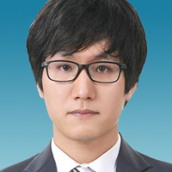





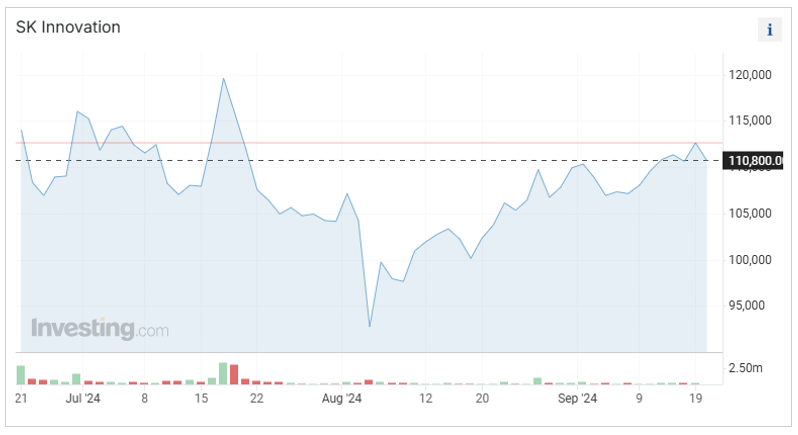
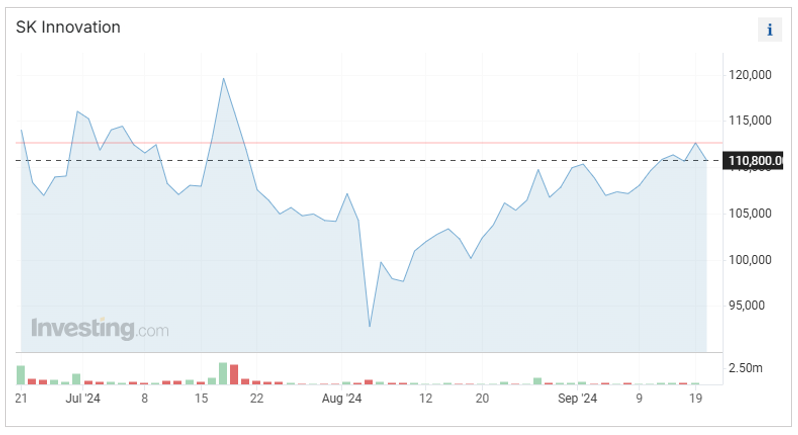





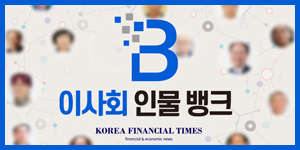







![“메가 LCC가 온다” 제주항공 vs 진에어, 진짜 대결은 이제부터 [주목 이 기업]](https://cfnimage.commutil.kr/phpwas/restmb_setimgmake.php?pp=006&w=69&h=45&m=5&simg=2025040513470800346dd55077bc212411124362.jpg&nmt=18)
![보험사, 관료 출신 사외이사 영입 러시…회계 등 제도변경 대응 [사외이사 줌人 (1)]](https://cfnimage.commutil.kr/phpwas/restmb_setimgmake.php?pp=006&w=69&h=45&m=5&simg=2025040517151405071dd55077bc212411124362.jpg&nmt=18)

![신동훈 갤럭시아머니트리 대표, 내실경영에 '흑자'…올해 선불카드·STO로 성장 페달 [2024 금융사 실적]](https://cfnimage.commutil.kr/phpwas/restmb_setimgmake.php?pp=006&w=69&h=45&m=5&simg=2025032815460700193957e88cdd512116082156.jpg&nmt=18)
![증권사 이사회 의장 분리 48%…내부통제위 법률가 수혈 [사외이사 줌人 (1)]](https://cfnimage.commutil.kr/phpwas/restmb_setimgmake.php?pp=006&w=69&h=45&m=5&simg=2025040513485204164dd55077bc212411124362.jpg&nmt=18)

![12개월 최고 연 3.20%…수협은행 ‘Sh첫만남우대예금’ [이주의 은행 예금금리-4월 1주]](https://cfnimage.commutil.kr/phpwas/restmb_setimgmake.php?pp=006&w=69&h=45&m=5&simg=20250404165639061515e6e69892f1439255124.jpg&nmt=18)
![기관 '알테오젠'·외인 '펩트론'·개인 '에코프로' 1위 [주간 코스닥 순매수- 2025년 3월31일~4월4일]](https://cfnimage.commutil.kr/phpwas/restmb_setimgmake.php?pp=006&w=69&h=45&m=5&simg=2025040511503908718179ad439072211389183.jpg&nmt=18)
![‘내부통제 중심’ 금융사 이사회, 사외이사 제역할 못한다 [사외이사 줌人 (1)]](https://cfnimage.commutil.kr/phpwas/restmb_setimgmake.php?pp=006&w=69&h=45&m=5&simg=2025040513193400567dd55077bc212411124362.jpg&nmt=18)













![[카드뉴스] 신생아 특례 대출 조건, 한도, 금리, 신청방법 등 총정리...연 1%대, 최대 5억](https://cfnimage.commutil.kr/phpwas/restmb_setimgmake.php?pp=006&w=298&h=298&m=1&simg=20240131105228940de68fcbb35175114235199_0.jpg&nmt=18)
![[카드뉴스] KT&G ‘Global Jr. Committee’, 조직문화 혁신 방안 제언](https://cfnimage.commutil.kr/phpwas/restmb_setimgmake.php?pp=006&w=298&h=298&m=1&simg=202503261121571288de68fcbb3512411124362_0.png&nmt=18)
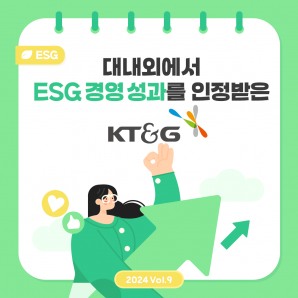

![[카드뉴스] 국립생태원과 함께 환경보호 활동 강화하는 KT&G](https://cfnimage.commutil.kr/phpwas/restmb_setimgmake.php?pp=006&w=298&h=298&m=1&simg=202403221529138957c1c16452b0175114235199_0.png&nmt=18)
![[신간] 리빌딩 코리아 - 피크 코리아 극복을 위한 생산성 주도 성장 전략](https://cfnimage.commutil.kr/phpwas/restmb_setimgmake.php?pp=006&w=81&h=123&m=5&simg=2025032814555807705f8caa4a5ce12411124362.jpg&nmt=18)
![[신간] 지속 가능 경영, 보고와 검증](https://cfnimage.commutil.kr/phpwas/restmb_setimgmake.php?pp=006&w=81&h=123&m=5&simg=2025011710043006774f8caa4a5ce12411124362.jpg&nmt=18)
![[서평] 추세 매매의 대가들...추세추종 투자전략의 대가 14인 인터뷰](https://cfnimage.commutil.kr/phpwas/restmb_setimgmake.php?pp=006&w=81&h=123&m=5&simg=2023102410444004986c1c16452b0175114235199.jpg&nmt=18)

![[신간] 똑똑한 금융생활...건전한 투자와 건강한 재무설계 지침서](https://cfnimage.commutil.kr/phpwas/restmb_setimgmake.php?pp=006&w=81&h=123&m=5&simg=2025031015443705043c1c16452b012411124362.jpg&nmt=18)

![[카드뉴스] KT&G ‘Global Jr. Committee’, 조직문화 혁신 방안 제언](https://cfnimage.commutil.kr/phpwas/restmb_setimgmake.php?pp=006&w=89&h=45&m=1&simg=202503261121571288de68fcbb3512411124362_0.png&nmt=18)
![[AD] 기아, 혁신적 콤팩트 SUV ‘시로스’ 세계 최초 공개](https://cfnimage.commutil.kr/phpwas/restmb_setimgmake.php?pp=006&w=89&h=45&m=1&simg=2024123113461807771f9c516e42f12411124362.jpg&nmt=18)
![[AD] 아이오닉5 '최고 고도차 주행 전기차' 기네스북 올랐다...압도적 전기차 입증](https://cfnimage.commutil.kr/phpwas/restmb_setimgmake.php?pp=006&w=89&h=45&m=1&simg=2024123113204707739f9c516e42f12411124362.jpg&nmt=18)




